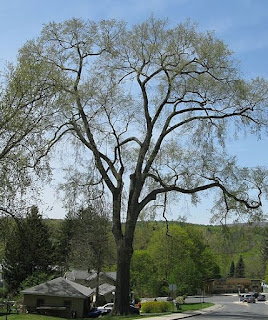Lanesborough, Massachusetts - "An Obscure Town In Berkshire"
On October 23, 1777, Lieutenant Israel Bartlett left Williamstown with the guards at the rear of the first division of the British column of the Convention Army, passed through New Ashford, and arrived in Lanesborough, Massachusetts, where he would spend the night. [1] British Lieutenant Francis (Lord) Napier of the 31st Regiment of Foot recorded doing the same, noting: "October … 23rd. Lanesborough 15 M[iles]". [2] It was a good day's march.
Both left Lanesborough the next day, Bartlett noting: "Marched 7 miles to Pittsfield and halted at good quarters”, and Napier: "October … 24th. Pittsfield 6 M[iles]". [3] More prisoners followed, some stopping, some simply passing through. Private David How of the Massachusetts militia was one of those who passed through and continued on, noting: “[Oct.] 24 This morning we Set out [from New Ashford] march’d Through Lainsborough Staid at Night at Pitsfield”. [5] Among those who stopped was an officer of the 47th Regiment of Foot, who left New Ashford and arrived in Lanesborough after marching just five miles. [4]Three days after the first of the British column arrived, the last would leave. On October 25th, the 47th would march five miles again, and stop in “Pitts Field”. [6]
Lanesborough was first settled by Europeans in the 1750's. Their timing was poor, as in 1754 a lieutenant-colonel from Virginia led a raid on French forces in southwestern Pennsylvania which helped trigger what would become the French and Indian War. The first Lanesborough settlers were driven off by Native attacks, but others came around 1760, and the settlement was incorporated as a town in 1765. [7]
A search of the MACRIS database identifies seven buildings in Lanesborough as dating from 1777 or earlier. [8] Entering Lanesborough from the north, the first listed structure is at 775 Williamstown Road (Route 7), and was for a while the clubhouse of the Donnybrook Country Club. Unfortunately, an announcement on their website indicates the golf course was closing as of December 2023. Continuing south about 2,000 feet, and taking a right onto Scott Road, which becomes North Main Street, one passes four other period buildings (all private homes which are not open to the public). The last two are near where North Main Street rejoins Route 7, about a one thousand feet north of what was the town's episcopal church, which was founded in 1767. A stone church replaced the earlier building in 1836, but was sold by the congregation in 2021, and is now used as a guest house. While the remaining two buildings are almost a mile off the likely route of march, it's possible they would have quartered guards or prisoners in 1777.
Another witness to the passing of the Convention Army may be one of the town's trees. It's impossible to say how many trees along the route of march are still alive, but Lanesborough lays claim to what is said to be the largest elm tree in Massachusetts, near the corner of Route 7 and Summer Street. Elm trees (along with chestnut trees) were once common in Massachusetts, but for the most part have been lost to disease. This particular specimen, shown above in an image from Wikipedia, has been recognized, and is regularly maintained to preserve it.
As to Lanesborough being an "obscure" town in Berkshire County, in the summer of 1776 future president John Adams asked William Tudor for information on various Massachusetts officers. Among these Tudor commented on was Brigadier-General John Fellows and the colonels of his regiment. Fellows and his brigade were stationed "at Greenwich on the North River about 2 Miles out of Town", as part of the army under General George Washington that was defending New York City. [9] Tudor was critical of Fellows, who he said was a colonel in 1775, but "never rose above a Captain" in the French and Indian War, and his three colonels including Colonel Jonathan Smith, who: “... belongs to Lanesborough, an obscure Town in Berkshire and is not so old...". [10]
[1] Bartlett, 401.
[2] Napier, 329.
[3] Bartlett, 401. Napier, 329.




Comments
Post a Comment